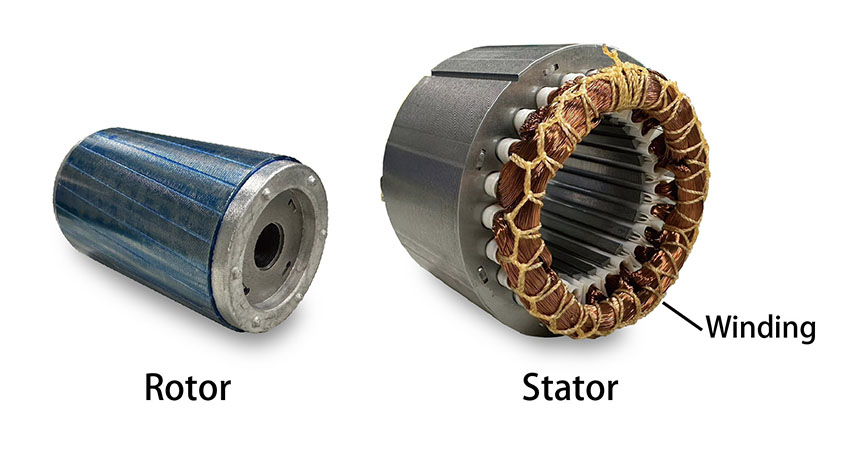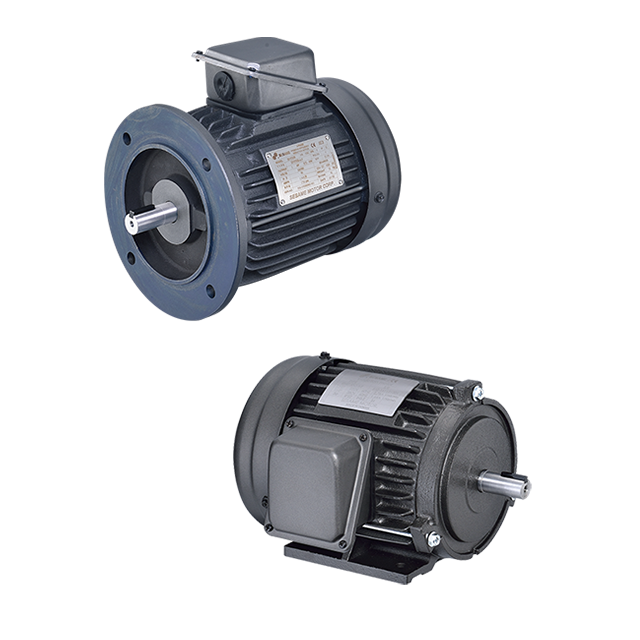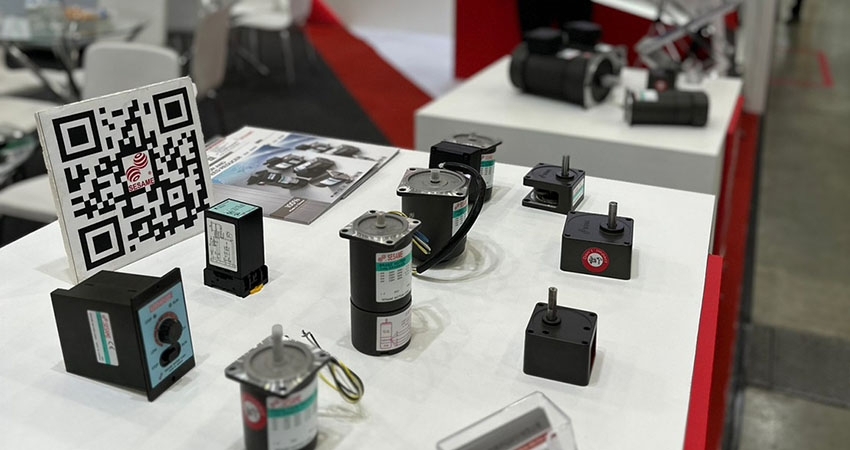Electric motor is the core of modern manufacturing and industrial automation. Various types of electric motor are available based on their principles, structures, characteristics and applications. Here are the things you need to know, types, characteristics and applications, before select and purchase motors.
Where Are They Used?
Motors are widely used in various fields, from heavy industry, artificial satellites, Mars rover to daily necessities, drones and toys, to bring convenience and efficiency improvement to industry and daily life.
Industrial usages
- Crane
- Ships and vehicles
- Lift or elevator
- Electric escalator
- Conveyor belt
- Fan
- Rolling door
Daily life usages
Motors are everywhere in daily life, from household appliances to the drive systems of green vehicles, motors provide indispensable support for the operation and performance of these products.
- Electric fan
- Washing machine
- Air conditioner
- Hair dryer
- Electric toothbrush
- Vacuum cleaner
- E-bike
- Drone
Types of Electric Motors
There are two types of electric motors depending on input voltage: AC motors or DC motors.
DC Motors
A DC motor works on the principle that when armature winding (rotor) placed inside a magnetic field is connected to a DC current, a magnetic field is created and interacted with the magnetic force from the permanent magnets (stator). This causes the rotor to start rotating. A commutator is provided to reverse the current through the stator and also reverse the magnetic field, to keep the rotor spinning. DC motors are widely used in hand tools, home appliances and industrial equipment due to the characteristics of wild speed adjustment range. DC motors can be divided into two types basically: brushed DC motors and brushless DC motors.
Brushed DC Motors
The major parts are a stator (permanent magnets), a rotor (armature winding), a commutator and brushes. Brushes, made of carbon or graphite, and the commutator are used to transmit DC current to the rotor to generate a magnetic field, which interacts with the magnetic field of the permanent magnet to drive the rotor to rotate. Brushed motors manufacturing costs are low and they are easy to control, but they have lower efficiency (compare to brushless motors) and the brushes require periodic maintenance and replacement due to long-term friction with the commutator.
Brushless DC Motors
Brushless DC motors (BLDC motors) work on the same principle similar to that of brushed DC motors. The main design difference is to control the current into the stator by an electric switch circuit instead of commutator and brushes to reduce losses of efficiency and material caused by friction. The advantages of BLDC motors are higher efficiency, reliability and lower noise; but the disadvantages are higher costs in manufacturing and complex drive circuitry.
Comparison of DC Motors
| |
Brushed DC Motor |
Brushless DC Motor |
| Operating Principle |
Uses brushes and commutator to transfer current to the motor's coils |
Uses electronic controller to control the current in the coils |
| Efficiency |
Lower |
Higher |
| Noise |
Louder |
Quieter |
| Cost |
Lower |
Higher |
| Manufacturing and Maintenance |
Simpler |
More Complex |
| Brush Replacement |
Regular |
No Replacement Needed |
AC Motors

The AC motor is mainly composed of a stator winding and a rotor. The stator winding is connected to an AC supply and creates the magnetic field to interact with the rotor, generate rotation. The main types of AC motors are:
Induction Motors
Induction motor is the most common AC motor, which is characterized by simple structure, easy manufacturing, relatively low cost and wide range of applications. Induction motors can be divided into single-phase induction motors and three-phase induction motors according to different power supplies. Induction motors are commonly used in household appliances, commercial or industrial equipment, such as washing machines, refrigerators, air conditioners, rolling doors, treadmills, food machinery, packaging machinery, electric vehicles, various automation equipment, etc.
Servo Motors
A servo motor is a type of electric motor that allows for precise control of rotation, angular, speed and torque. The servo motor system mainly consists of a motor, a position sensor and a driver (controller) that regulates the motor's movement accurately and stably according to the input setting. Servo motors are widely used in applications that require precise control of speed, torque, and position like industrial automation control, machine tools, robots, food processing machinery, rubber and plastic machinery and other fields.
Speed Control Motors
A single-phase induction motor speed can be regulated by an additional tachogenerator and a speed controller. The tachogenerator is used as a feedback device to the closed loop between the motor and speed controller and maintain the speed. Three-phase induction motors can change the motor speed through a variable frequency driver (VFD) to meet the speed adjustment requirements.
Gear Motors
An additional gear reducer or a gearbox is used to reduce the motor speed and increase the motor's output torque. Increasing the output torque of the motor is equivalent to increasing the load capacity of the motor, that is, improving the working capacity of the motor.
 High efficiency motor
High efficiency motor
Motor efficiency refers to the proportion of electrical energy that a motor converts into mechanical energy for rotation. High efficiency means more electrical energy is converted into mechanical energy, which is equivalent to reducing the loss of electrical energy. For example, an efficiency of 80% means that the motor can convert 80% of electrical energy into mechanical energy. The IE level set by the International Electrotechnical Commission is usually used to represent the efficiency of the motor. IE1, IE2, IE3 and IE4 respectively represent different efficiency levels. The larger the number, the higher the efficiency and the more power it saves.
Comparison of Brushless DC Motors and AC Motors
| |
Brushed DC Motor |
Brushless DC Motor |
| Working Principle |
Uses brushes and commutators to transmit current to the motor's coils |
Uses electronic controllers to control the current in the coils |
| Efficiency |
Lower |
Higher |
| Noise |
Louder |
Quieter |
| Cost |
Lower |
Higher |
| Manufacturing and Maintenance |
Simpler |
More Complex |
| Brush Replacement |
Periodic |
No Replacement Needed |
Things to Note When Choosing A Motor
The selection should be based on specific application requirements. AC induction motors are widely used in industrial fields, convenient for maintenance, and can even operate in higher temperature environments. DC motors are easier to control the speed and have a larger speed adjustment range. DC motors are often used in small power tools, home appliances and toys. In addition, the following are factors to consider when selecting a motor:
- Power: Motor power refers to the maximum energy that the motor can output. It is usually rated in watts (W) or horsepower (hp). The greater the power, the greater the torque the motor can output, which means the heavier the load it can drive, and of course the greater the size and weight of the motor.
- Speed: Refers to the number of revolutions of the motor per minute, and is described in RPM (speed/minute). The higher the speed, the faster the motor rotates, but the smaller the torque it outputs.
- Power supply: To make sure the power supply to the motor is AC or DC, and the voltage (V) and current (A) required for operation. The higher the voltage, the more power the motor can output. The greater the current, the more electricity the motor consumes.
- Efficiency: High efficiency motors save more electricity, but the higher the manufacturing cost and price.
- Noise: The motor will produce vibration and noise when running, and may even resonate with fixtures or other parts to produce louder sounds. Some specific application or usage environments have stricter requirements and restrictions on motor operating noise.
- Safety standards and regulations: There are corresponding safety standards and regulations for electrical, electronic and related devices, including motors, to thoroughly verify, evaluate and measure the safety of products or parts. For example, CE in the European Union, UL in the United States, CSA in Canada, etc.
- Price: The price of the motor will vary depending on the above factors such as type, power, speed, voltage, current, efficiency, noise, etc. Appropriate products should be selected based on demand and quality.
Conclusion
Electric motors are used to convert electrical energy into kinetic energy to drive other devices or equipment. Various types and performances of motors are available for different industrial and daily lives applications. When choosing an electric motor, the factors need to be considered including the power, speed, torque, other characteristics of the motor, requirements of the applications and environment used. Sesame Motor has more than 30 years of experience in the manufacturing and sales of motors and speed reducers. Quality, stable performance and certified products have been delivered to more than 50 countries.
Contact us for more information on AC motors, gear motors products.

 The AC motor is mainly composed of a stator winding and a rotor. The stator winding is connected to an AC supply and creates the magnetic field to interact with the rotor, generate rotation. The main types of AC motors are:
The AC motor is mainly composed of a stator winding and a rotor. The stator winding is connected to an AC supply and creates the magnetic field to interact with the rotor, generate rotation. The main types of AC motors are:
 The AC motor is mainly composed of a stator winding and a rotor. The stator winding is connected to an AC supply and creates the magnetic field to interact with the rotor, generate rotation. The main types of AC motors are:
The AC motor is mainly composed of a stator winding and a rotor. The stator winding is connected to an AC supply and creates the magnetic field to interact with the rotor, generate rotation. The main types of AC motors are:
 High efficiency motor
High efficiency motor